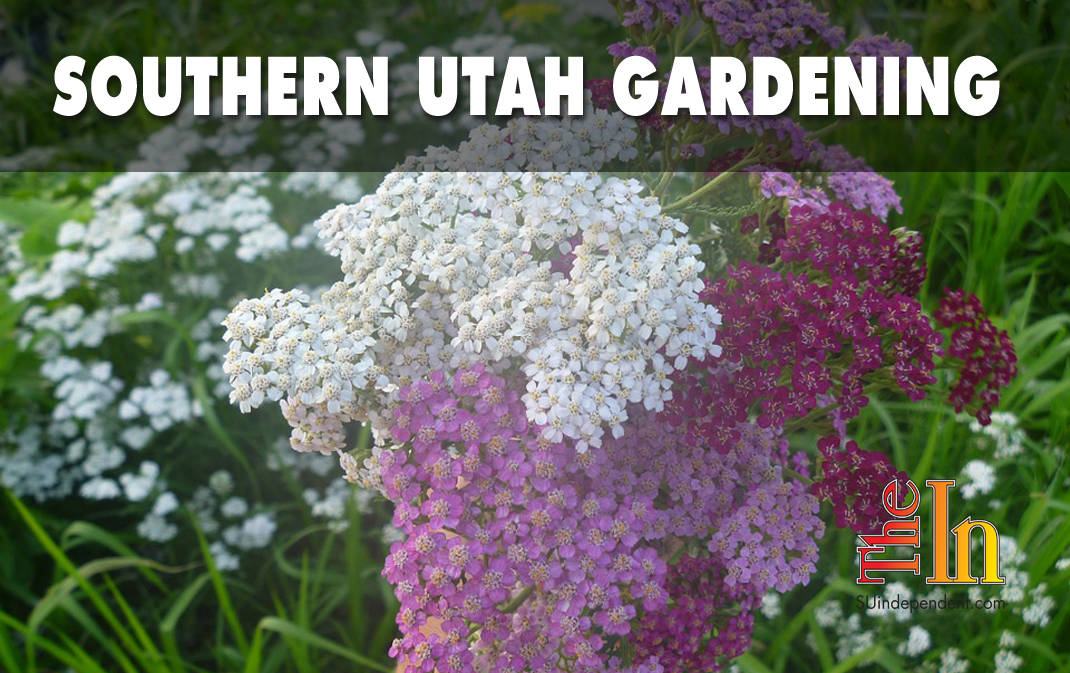
By Taun Beddes
Temperatures will be climbing soon, and it’s important to select perennials now that require less water as the summer heat wears on. Below are nine water-wise perennials that are tried and true.
Yarrow (Achellia spp.)
There are many species of ornamental yarrow. They vary in height from 6 to 24 inches. Flower colors include yellow, white, red, and pink. Yarrows bloom for most of the season. Once established, they survive with little supplemental water. In fact, over-irrigation allows them to get out of hand. Additionally, yarrows attract insect pollinators to the yard.
Hummingbird mint (Agastache spp.)
Hummingbird mints are arid west natives and work extremely well in the water-wise landscape. They thrive on little to no supplemental water and bloom from July to first frost. Flower colors include white, pink, yellow, and red. Hummingbird mints also attract many insect pollinators. As some species are unsuitable for colder mountain valleys, check plant description tags for cold hardiness ranges.
Winecups (Callirhoe involucrata)
Winecups are a native groundcover-type plant that blooms the first half of the growing season and then goes dormant. Its flowers are a beautiful fuchsia-pink.
Gaura (Gaura spp.)
Often referred to as whirling butterflies, gaura blooms from late spring to first frost. It has flower sprays that can be white, pink, or red, and individual plants easily reach 3 feet high and wide. Gaura is not hardy in colder mountain valleys and prefers well-drained soil.
Crane’s bill or perennial geranium (Geranium spp.)
Perennial geraniums bloom heavily in early summer and then sporadically the rest of the season. Depending on the type, they can reach up to 3 feet high and wide or grow as a ground cover. Its flowers vary in color from white to dark pink. They require a deep soaking every 3 to 4 weeks and are moderately tolerant of shade.
Blanket flower (Gallardia spp.)
Blanket flowers are native to the arid west and have beautiful daisy-like flowers ranging in color from bright or earth-tone shades of yellow to orange and red. They have a spreading habit and do not reach more than a foot high. They also bloom from late spring to first frost, but require regular deadheading. The easiest way to cause blanket flower to look ratty and spindly is to overwater it. It thrives on as little as one good deep soaking a month.
English lavender (Lavandula angustifolia)
English lavender thrives on little water and lots of summer heat. Depending on the cultivar, the size ranges from 18 to 36 inches high and wide. It blooms in midsummer and its flowers are, not surprisingly, lavender to pink. Lavender should not be cut back much in the fall. Instead, dead stems should be removed in the spring.
Stone crop (Sedum spp.)
There are numerous varieties and species of stone crop that are either ground covers or upright species. None tolerate overwatering to any degree as it causes them to become leggy and unattractive. However, in dry situations they are stars. An extremely popular upright variety is Autumn Joy. It blooms in late summer and fall with pink flowers.
Fire chalice or hummingbird flower (Zauschneria spp.)
This is an underused native plant that shines whenever planted in dry situations. It has a spreading habit, reaches up to 18 inches tall, and blooms profusely from midsummer to fall. Its flowers are similar in shape to fuchsia and range in color from orange to deep orange-red.
Taun Beddes is a Utah State University Extension horticulturist, taun.beddes@usu.edu, (801) 851-8460






